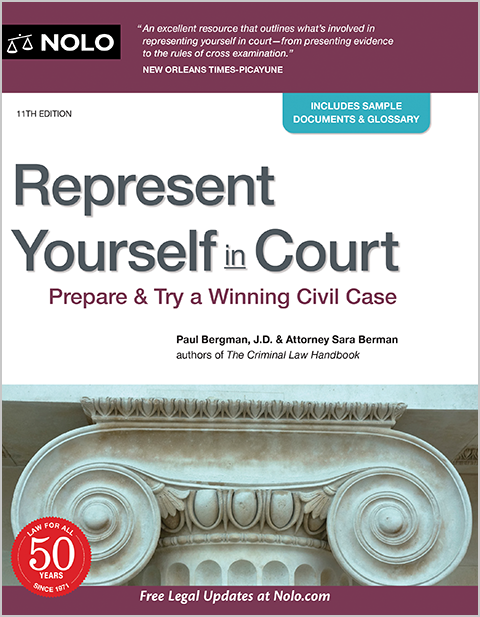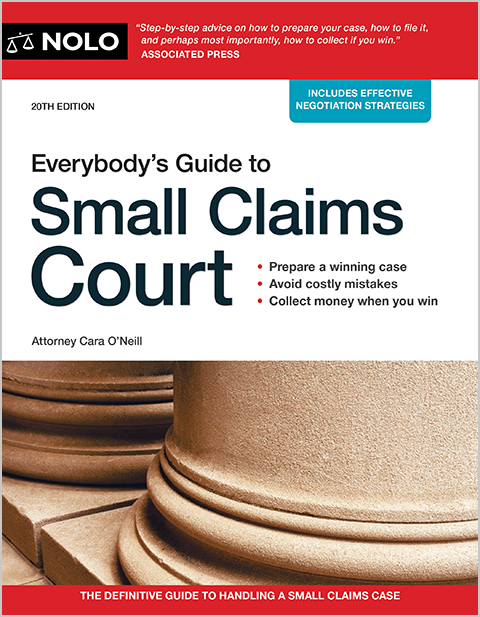Learn about formal discovery in a lawsuit, including common discovery tools and penalties courts can assess for noncompliance with discovery orders.
Discovery is a process used to get information the parties need to prove claims in a lawsuit. The discovery phase of a case—which can last for months or even more than a year in complex litigation—begins soon after a lawsuit gets underway. The parties (or more likely, their lawyers) gather needed information from their opponents and from potential witnesses.
It's called "discovery" because the parties use the process to discover facts and documents they can introduce at trial or use to settle the case.
Gathering Evidence Using Formal Discovery
Most discovery occurs outside the courtroom, with parties exchanging written information and sitting through face-to-face questioning sessions (called "depositions"). The types of evidence that can be legally obtained are very broad, including:
- facts about the case
- the identity of others who might know something about the case
- documents relating to the case, and
- inspection of physical objects or property connected to the dispute.
How to Do Discovery in a Lawsuit: Discovery Procedures
Four types of formal discovery tools are frequently used in lawsuits. The most common discovery techniques include:
- Depositions. In a deposition, one party or that party's lawyer conducts face-to-face questioning of the other party or a witness to the dispute. The person being questioned (the "deponent") must answer under oath, and the answers are recorded for later use at trial. If the deponent cannot testify at trial, the questions and answers might be read to the jury as evidence. If the deponent does testify and gives different answers at trial from those he gave during the deposition, the questions and answers can be used to show the jury that the witness changed his story.
- Requests to produce documents and things. In a request for the production of documents, one party asks the other for documents, records, and other tangible things related to the dispute. Requests for production are usually used to gather things like contracts, employment files, billing records, medical records, or other documents. However, they can also be used to inspect physical objects or property—for example, in a dispute about whether a contractor properly repaired a homeowner's roof, the contractor's lawyer might ask to have a roofing expert inspect the work.
- Interrogatories. Interrogatories are written questions one party sends to other parties to the case. The recipient must answer the questions in writing and under oath. The answers can be used at trial in the same way as deposition answers—to challenge a party who changes their story later.
- Requests for admission. In a request for admission, one party asks another party to admit, under oath, that certain facts are true or certain documents are genuine. These requests are generally used to save time and narrow the issues that must be proved at trial.
Examples of Discovery in Law: What Can Be Discovered
The basic rule of discovery is that a party can obtain any information that's relevant to the issues in the case. To be relevant, information need not be something that a party might actually use at trial. It's enough if the information could lead a party to find other information that it uses at trial. Stated a bit differently, a party is allowed to discover information that pertains even slightly to any issue in the lawsuit as long as the information isn't "privileged" or otherwise legally protected (see "Limits on What Can Be Discovered" below).
Here are some of the things lawyers often ask for in discovery:
- anything a witness or party saw, heard, or did in connection with the dispute
- anything anyone said at a particular time and place (for example, in a business meeting related to the dispute or after a car accident that turned into a lawsuit)
- the identity of anyone who might know something about the dispute or about the injuries or money losses either party suffered
- detailed information on how a business is run (for example, a party might try to determine how a company that sold a dangerous product decides what to sell or how a business makes employment-related decisions or keeps its accounting records)
- documents relating to the dispute, and
- the personal, educational, and professional background of a witness.
Limits on What Can Be Discovered
Virtually any information that might be slightly connected to the lawsuit is fair game for discovery. But this enormous latitude sometimes leads to abuse. Lawyers might try to pry into subjects with no legitimate significance for the lawsuit or are private and confidential, just to annoy or embarrass the parties. Fortunately, there are some legal limits on this kind of probing and some protections to keep private material from being disclosed to the public.
Confidential Conversations
Conversations between people engaged in certain relationships are given a special legal protection known as privilege. Courts and legislatures have decided that the free flow of confidential information in these relationships is so important that it must be protected, even though that information might be important to others in a lawsuit. Under the law, no one can be required to disclose any information, whether verbal or written, that was confidentially exchanged within the following relationships:
- husband and wife
- lawyer and client
- doctor and patient, and
- religious advisor and advisee (although this privilege is often referred to as "priest-penitent," it applies more generally to any confidential conversation between a clergy member of a recognized religion and a person seeking spiritual counsel).
Private Matters
In recent years, courts have increasingly recognized that some aspects of personal life should remain private, beyond the reach even of lawyers. But the right to privacy is a fairly recent and still-developing legal notion. As a result, there is no clear definition of precisely what it covers—and the extent of its protection varies considerably from state to state. Roughly, the right to privacy protects a person from having to divulge information that is not obviously relevant to the lawsuit and is a matter that a person would not normally discuss or reveal to anyone outside of immediate family and intimate friends. This might include issues such as:
- health or body issues
- sexuality, sexual practices, or sexual partners
- spiritual or religious beliefs, and
- immediate family relationships.
Third-Party Privacy Rights
Courts are more willing to protect the privacy of third parties—for example, witnesses, co-workers, or family members of a party -- than the privacy of parties to a lawsuit. Courts often limit how much a party can find out about someone who isn't involved in a lawsuit, reasoning that it isn't fair to invade the privacy of someone who was dragged into a dispute.
Keeping Discovery Information Confidential
Even if a party is required to disclose certain information to the other side in a lawsuit, that information can be treated confidentially by the court—that is, the party who receives it can be prevented from revealing it to anyone else, and the court can keep it out of the public record. This might be done to protect, for example, sensitive financial information, confidential information belonging to a business, or personal medication information that's relevant to the lawsuit. For this to happen, a judge must usually order that information be kept confidential, in what's often called a "protective order."
Sanctions for Discovery Misconduct
Because the difference between winning and losing can come down to what the parties find in discovery, the discovery phase of a lawsuit can be—and often is—the most costly, time-consuming, and contentious part of a court case. Discovery fights are so common that court rules, both federal and in most states, include procedures the parties must follow to work out their disagreements among themselves, without the court's involvement.
But there are times when the parties simply can't agree on how to sort out their discovery differences. In those cases, the judge who's presiding over the case will settle matters. The party who wants discovery files a "motion to compel" responses, and the opposing party often responds with a "motion for protective order," asking that it not have to produce the requested information.
The court will issue discovery orders, and those orders must be followed. Failure to do as the court directs can result in sanctions—monetary or other penalties—against the misbehaving party. A case decision from Florida illustrates.
In a wrongful death lawsuit against Tesla alleging that one of its vehicles was defectively designed, the plaintiffs (the parties who filed the lawsuit) asked Tesla to produce crash and other testing data. The parties couldn't agree on what Tesla was required to produce. So, in November 2023, the court issued an order requiring the company to produce various test results.
Tesla didn't fully comply with the court's order until July 2025. Then, it produced 123,000 pages of documents stripped of metadata and file names. In order to use the documents, plaintiffs would have had to manually compare each document to a document key the company generated. The court said that in this format, the documents were "virtually useless."
Finding that Tesla's conduct was meant to make the plaintiffs' discovery work "more difficult, time consuming and expensive," the court sanctioned the company, ordering it to pay the attorneys' fees the plaintiffs had to pay to force Tesla's compliance. The amount of those fees will be determined at a later hearing. The court also noted that future discovery violations might result in more severe sanctions.
Want to Learn More?
These discovery tools are explained in more detail in Represent Yourself in Court, by Paul Bergman and Sara Berman (Nolo), and Nolo's Deposition Handbook, by Paul Bergman and Albert Moore.



